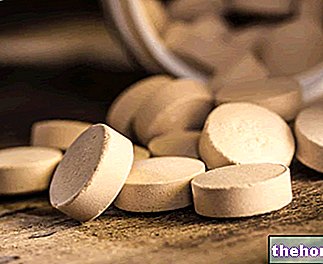
Regarding carbohydrates, their function and the "importance they play in an" optimal diet, it is now common to encounter the concepts of:
- Glycemic index (GI)
- Glycemic load (CG)
- Insulin index (II)
- Insulin load (CI).
Below we will analyze how low glycemic index and reduced glycemic load (of food or meals) can really affect nutritional balance, weight trend and some metabolic pathologies.
For further information: Glycemic Index (those digestible for man) are divided, based on their complexity, into different categories:
- Monosaccharides: monomers, functional units, respectively glucose, fructose and galactose
- Disaccharides: dimers, composed of two monosaccharides, the most common are: maltose (glucose + glucose), sucrose (glucose + glucose) and lactose (galactose + glucose)
- Oligosaccharides: from three to ten dimers; the known are maltotriose (glucose + glucose + glucose) and raffinose (fructose + glucose + galactose)
- Polysaccharides: from over ten monomers, for example starch (formed by amylose and amylopectin) and glycogen (glucose polymers).
Note: cellulose is to all effects a glucose-based polysaccharide but, for humans, it is unavailable or indigestible. In fact, we humans do not have the appropriate enzymes capable of hydrolyzing the beta-glycosidic bonds between the monomers. we will explain this concept better.
The simple sugars proper are monosaccharides even if, perhaps due to their similar solubility (soluble sugars), disaccharides (complexes of two monosaccharides) are often grouped together in this category. Oligosaccharides and polysaccharides are instead complex, tendentially insoluble.
Once ingested, the digestion of complex carbohydrates begins in the mouth (salivary enzymes) and ends in the intestine (in which the pancreatic enzymes and those of the brush border of the enterocytes intervene). In this regard, remember that the human being is equipped only with enzymes capable of breaking down glycosidic bonds alpha-1,4 (the one that forms linear chains between monomers, as in amylose) and alpha-1,6 (the one that attacks linear chains laterally, as in "amylopectin). Beta bonds, on the other hand, cannot be hydrolyzed and characterize molecules that for us constitute the so-called dietary fiber.
This is how complex carbon hydrates are broken down into monosaccharides to allow them to pass through the intestinal wall and enter the bloodstream; glucose and galactose enter the enterocytes by transport of SGLT1 (acronym of the English Sodium-dependent Glucose coTransporter 1), while fructose by facilitated diffusion. Since our cells "run on glucose", galactose and fructose will be retained by the liver which will transform them into glucose; therefore, they increase the amount of sugar in the blood more slowly. At this point, the glucose can be pumped back into the blood and distributed for energy purposes or transformed and stored in the form of glycogen - if the reserves are deficient. The remaining glucose will be converted into fatty acids and stored in the adipose tissue - or retained by the liver - in the form of triglycerides. The glycemic index (GI) of foods is determined by the time it takes to carry out all these steps; fructose for example, despite being simple and soluble, has a lower GI than for example maltodextrins.
Specifically, GI refers to the speed at which blood glucose (glycaemia) increases following the intake of 50 g of glucose in solution or white bread. This index is expressed as a percentage, putting it in relation to the speed d "increase in blood glucose of the evaluation parameter (which corresponds to 100) and using the same quantities. Logically we could understand that a glycemic index of 50 will indicate that the food raises the blood sugar with a speed that is half that of glucose.
At first glance, the glycemic index would seem a very useful data, as it provides important data on the insulin response. In reality, the glycemic index has no meaning except associated with the amount of nutrients that stimulate the insulin, ie the portion. of carbohydrates, this parameter is called glycemic load (CG). The GI, not contextualized on the CG, is meaningless since the glycaemia, responsible for insulin, rises mainly based on how many carbohydrates are eaten.
Furthermore, the glycemic index can be influenced not only by the nature of dietary carbohydrates, but also by other factors such as: the presence of proteins, fats, excess or defects in water, cooking, etc. This is because the soluble fibers retain water and slow down gastric emptying as well as intestinal transit; proteins and fats, on the other hand, require a conversion of the digestive pH (from acid to basic), a process which takes time.
Foods with a low glycemic index are generally those low in carbohydrates, rich in fiber and high in fat; the presence of proteins, on the other hand, lowers the glycemic index in a manner relative to the type of protein contained and to the possible coexistence of the other nutrients mentioned. Lean dairy products, for example, like the classic light cottage cheese, have a higher glycemic index than you might expect.
of proteins and triglycerides. This is because the liver is able to maintain sufficient glucose availability for survival - but in the long term this depends a lot on the general composition of meals and the level of physical activity - even with low intake of dietary carbohydrates. This phenomenon occurs by neoglucogenesis, or the synthesis of glucose starting from certain amino acids (called neoglucogenetics), glycerol (the molecule that holds together the fatty acids in glycerides) and lactic acid, useful for maintaining blood sugar. Furthermore, insulin secretion is stimulated not only by the increase in blood glucose, but also by the presence of amino acids and fatty acids. That said, it is well established that insulin is also produced following the intake of sugar-free foods.
Now let's talk about the insulin consequences of high glycemic levels, to understand if a low glycemic index of foods can really benefit health. Glycemia is regulated by the endocrine pancreas, which mainly uses two hormones: glucagon (catabolic, tells the liver to use glycogen to release glucose into the blood) and "insulin (anabolic, which tends to lower it through the processes that we will see now). .
Insulin promotes the use of glucose by acting on different types of cells and tissues; in particular, it stimulates the synthesis of hepatic and muscle glycogen and - when present in excess - also the synthesis of fatty acids, favoring their accumulation. Moreover, it stimulates the production of leptin by adipose tissue, a hormone that regulates the " food ingestion and calorie expenditure, giving the sense of satiety. Note: the appetite hormone, on the other hand, is ghrelin (produced by the stomach).
The increase in post-prandial glycaemia (which, as we will see, is not due only to the intake of carbohydrate foods) determines a proportional secretion of insulin. A normal blood sugar, even physiologically increased due to food intake, does not cause any kind of problem. If, on the other hand, it rises too high and / or for an excessive period, it is associated with hyperinsulinemia and, in the long term, can cause a series of imbalances such as: LDL protein glycation and increased cholesterolemia, reduced glucose tolerance, insulin resistance and hyper production of fats with consequent triglyceridemia; in turn, there may be: impaired insulin production and type 2 diabetes mellitus, tendency to overweight, a greater predisposition to atherosclerosis and cardiovascular events.
The rate of insulin secretion of a food or meal is called the insulin index (II), while the amount of insulin that can be produced is called the insulin load (CI).
appears approximately simultaneously for all carbohydrates; the time it will take will be about 25-30 minutes depending on the type of carbohydrate taken in fasting, whether it is simple or complex. As you can see, the variation is only 5 minutes, a negligible time when compared to the 3 hours required to complete the digestion of a main meal.However, overall, wanting to create a diet intended for the treatment of type 2 diabetes mellitus, hypertriglyceridemia and obesity, after establishing an adequate energy intake, choosing the right foods and deciding the relative portions, also the choice of products with a lower glycemic index can only help therapy. On the other hand, it should not be considered a fundamental criterion.




























